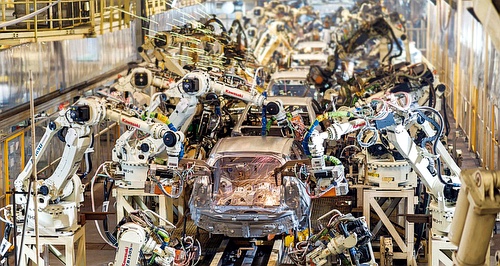News - ToyotaToyota suspends Chinese ops amid power cutsHEATWAVE: Climate related electricity shortages in Sichuan province forced local authorities to order a shutdown of many industrial operations, including Toyota’s Chengdu plant.
Further production woes impact Toyota’s global production forecast, this time in China18 Aug 2022 By MATT BROGAN TOYOTA has suspended vehicle production at its plant in Chengdu, China, as severe power restrictions impact the region.
The facility in China’s Sichuan province, was forced to suspend operations after local authorities issues an order to conserve electricity as the western part of the country struggled to cope with its worst heatwave in 60 years.
Sichuan province has rationed industrial electricity consumption for users across 19 of its 21 major cities, prompting Toyota and other producers to suspend operations, or curtail output.
According to a notice issued by the Department of Economy and Information Technology of Sichuan, all industrial operations in the province must suspend operations until at least August 20 as it works to prioritise electricity supply to residential consumers.
"We're monitoring the situation every day and following the guidance from the government," a Toyota spokesperson told Automotive News Europe, but did not reveal how many vehicles would be affected by the suspension.
The news is yet another blow to Toyota which has twice cut its global production targets in the 2023 calendar year and cancelled fresh orders of vehicles including the LandCruiser 70- and 300-series ranges as it struggles to meet demand.
In January, Toyota said that the impacts of the microprocessor shortage had forced it to slash approximately 150,000 units from its forecast target of 9.3 million units, the cuts impacting models including the Camry, CH-R, Prius and RAV4 and Lexus models including the IS, LS, NX and UX.
Locally, the RAV4 has been the subject of extensive customer wait times with hybrid-powered models particularly impacted by Toyota’s production woes. As many plants across Asia sat idle through the COVID-19 period, order banks for the popular SUV continued to grow, leading to wait times of up to 10 months, depending on variant.
Toyota faced yet another hit to its production targets in June when it announced that it would cut a further 50,000 units from its global production forecast. Citing semiconductor supply issues and parts-supply disruptions, the Japanese firm apologised to its customers, saying it was difficult to predict when production levels would return to normal.
“It remains difficult to look ahead due to the shortage of semiconductors and the spread of COVID-19. There is a possibility that the production plan may be lower,” Toyota said in a recent statement.
“However, we will examine the parts supply closely to minimise sudden decreases in production, and continue to make every effort possible to deliver as many vehicles to our customers at the earliest date.”
In Japan, Toyota suspended production at its Motomichi plant in July affecting models including the new all-electric bZ4X, GR Yaris and Lexus LC. It also shuttered its Takaoka plant, where the Kluger and RAV4 are produced, for a fortnight.
Other facilities, including Tahara (Lexus LS, IS, RC and NX), Iwate (C-HR, Yaris and Yaris Cross), Miyagi Ohira (Yaris Cross and Corolla), as well as Fujimatsu and Yoshiwara (Lexus LX, Toyota LandCruiser 70 Series and 300 Series) were also affected by the slowdown.
Locally, Toyota Australia told GoAuto News that production cutbacks would continue to have an impact on new-vehicle delivery times, but that it was doing “everything possible” to deliver vehicles to its customers as soon as possible.
“Toyota Australia continues to work closely with our global production team to support our dealers and our customers. Together with our parent company, we are doing everything we can to get customers into their new Toyota vehicles as soon as possible,” a spokesperson said.
“We ask customers seeking an update on their individual order to please contact their local/preferred dealer, who is best placed to assist. We apologise to customers experiencing delays and sincerely thank them for their patience.”  Read more |
Click to shareToyota articlesResearch Toyota Motor industry news |

















Facebook Twitter Instagram